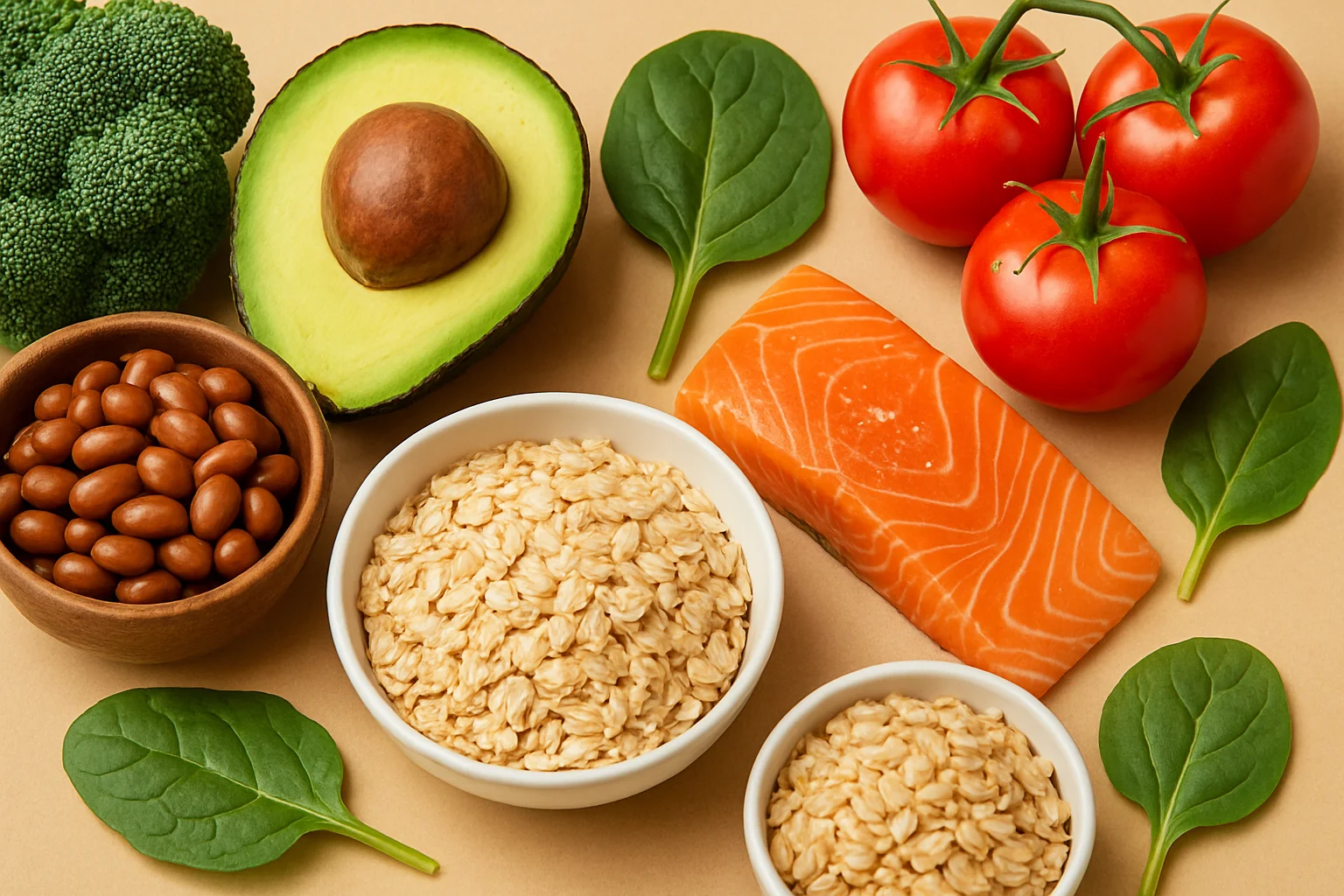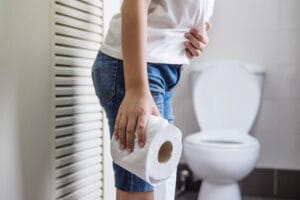If you’re dealing with piles (also known as hemorrhoids) or anal fissures, you know how painful and uncomfortable these conditions can be. One of the most important yet often overlooked parts of treatment and prevention is your diet. A well-planned diet for piles and fissures can significantly reduce pain, make bowel movements easier and help in faster healing.
In this blog post, we’ll explore the best diet for piles and fissures, foods you should eat, what you should avoid and some practical daily tips to manage your condition better.
What Are Piles and Fissures?
Before we dive into the diet let’s understand what these conditions are:
- Piles (Hemorrhoids): Swollen blood vessels in the rectum or anus, often caused by straining during bowel movements, chronic constipation or sitting for long periods.
- Fissures: Small tears or cuts in the lining of the anus, usually caused by passing hard stools or straining.
Both can lead to pain, bleeding, itching and discomfort during or after bowel movements. The good news is that a proper diet for piles and fissures can offer significant relief and support healing.
Why Diet Matters for Piles and Fissures
The food you eat directly affects your digestion and bowel movements. A poor diet low in fiber and fluids can lead to constipation which worsens both piles and fissures. On the other hand a fiber-rich and hydrating diet helps soften the stool making it easier to pass without straining.
Let’s now look at the most recommended diet for piles and fissures, what to eat and what to avoid.
What to Eat: The Best Foods for Piles and Fissures
Here’s a list of foods that are ideal for a diet for piles and fissures:
1. High-Fiber Fruits
Fruits are one of the best natural remedies when dealing with piles or anal fissures. They are rich in both soluble and insoluble fiber which helps bulk up the stool and supports smooth bowel movements, a key factor in reducing strain during defecation. Fruits like papaya, apples (with the skin), bananas, pears, oranges and guavas not only aid digestion but also offer essential vitamins and antioxidants that promote overall colon health. Starting your day with a fresh fruit bowl or including fruits as mid-morning or evening snacks can make a noticeable difference in your symptoms and prevent recurrence.
2. Vegetables
Vegetables are essential in managing piles and fissures because of their high fiber and water content. Including a variety of vegetables such as carrots, spinach, bottle gourd (lauki), beets, cabbage and broccoli can greatly improve bowel regularity. These veggies soften the stool, reduce inflammation and ease the pain associated with hard bowel movements. For maximum nutritional benefit, opt for steaming or boiling vegetables instead of deep frying. A colorful plate filled with fibrous vegetables should be a daily habit for those prone to digestive troubles.
3. Whole Grains
Switching from refined grains to whole grains is a simple yet powerful dietary change for anyone suffering from piles or fissures. Whole grains like oats, brown rice, whole wheat roti, quinoa, barley and daliya (broken wheat) retain their fiber-rich outer layers that are stripped away in processed grains. This fiber helps regulate bowel movements, improves stool consistency and reduces the risk of constipation, the main trigger behind most anal disorders. Include whole grains in every meal to create a solid foundation for digestive wellness.
4. Legumes and Pulses
Legumes and pulses are not only great sources of plant-based protein but also provide a healthy dose of fiber which promotes regular and strain-free bowel movements. Lentils (masoor), chickpeas (chana), kidney beans (rajma) and moong dal can support gut health and reduce pressure on the anal canal. These foods are especially effective when soaked before cooking, which enhances digestion and minimizes the risk of gas or bloating a common concern when increasing fiber intake. Include pulses regularly in your lunch or dinner for long-term digestive support.
5. Seeds and Nuts (In Moderation)
Seeds and nuts like flaxseeds, chia seeds, almonds and walnuts are rich in fiber, healthy fats and omega-3 fatty acids. These nutrients play a role in reducing inflammation and supporting smoother digestion. Flaxseeds and chia in particular, form a gel-like substance when soaked in water, which helps in softening stool and easing bowel movements. However, moderation is key excessive intake of nuts without enough water can actually cause constipation. Always pair seeds and nuts with adequate hydration to avoid this issue.
6. Plenty of Water
Fiber cannot function properly in your digestive system without enough water. Staying hydrated ensures that the fiber you consume can soften the stool and ease its passage through the intestines. Without water, even a high-fiber diet may lead to harder stools and worsen constipation. Aim for at least 2.5 to 3 liters of water daily, more if you live in a hot climate or have an active lifestyle. Drinking warm water in the morning can also stimulate bowel movements and support gut health.
7. Probiotic-Rich Foods
Probiotic-rich foods like curd, yogurt, buttermilk and kefir help maintain a healthy balance of gut bacteria which plays a crucial role in digestion and inflammation control. These good bacteria promote smoother bowel movements and reduce the risk of infections or flare-ups especially in those prone to chronic piles or fissures. Including a serving of probiotic foods daily can significantly enhance your digestive resilience and promote natural healing of the anal region. Buttermilk after meals or curd with lunch are simple and effective additions.
What to Avoid: Foods That Worsen Piles and Fissures
Avoiding the wrong foods is just as important as eating the right ones. Here’s what to limit or eliminate in your diet for piles and fissures:
1. Refined and Processed Foods
Refined and processed foods like white bread, pasta, pastries and packaged snacks may be convenient, but they’re a major culprit in digestive issues. These foods are stripped of their natural fiber content which is essential for smooth and regular bowel movements. As a result, they can slow down your digestion and lead to hard stools, one of the main causes behind the development and worsening of piles and fissures. Avoiding refined products and switching to whole grain alternatives can make a significant difference in your recovery and comfort.
2. Spicy and Fried Foods
Foods high in spice and oil, such as pickles, fried snacks and heavily spiced curries can irritate the digestive tract and the anal region. For those already suffering from piles or fissures, consuming such items may worsen inflammation and increase pain during bowel movements. These foods may also contribute to loose stools or acidity, adding to the discomfort. While it’s okay to enjoy spice occasionally, it’s best to keep it minimal and avoid deep-fried or greasy meals altogether during flare-ups.
3. Caffeine and Alcohol
Caffeinated drinks like coffee and alcoholic beverages can have a dehydrating effect on your body. Dehydration reduces the water content in your stoo, making it harder and more difficult to pass, a dangerous situation for someone managing piles or fissures. While occasional consumption is not harmful, it’s important to compensate with extra water intake if you choose to drink coffee or alcohol. Ideally, limit or avoid them during active symptoms and prioritize hydration instead.
4. Red Meat and Fatty Foods
Foods like mutton, beef, burgers, sausages, and creamy dishes are heavy on the digestive system and often low in fiber. They stay in the gut longer, slow down bowel movements and increase the chances of constipation. For those prone to piles or fissures, this can result in excessive straining and increased pressure on the anal canal. If you consume non-vegetarian food, consider switching to lighter protein sources like fish, eggs or legumes and pair them with fiber-rich vegetables and whole grains.
5. Dairy Products (in Excess)
Dairy items like cheese, full-fat milk, and ice cream may cause bloating, gas or constipation in certain individuals especially when consumed in excess. These effects can aggravate the symptoms of piles and fissures by making stools harder and bowel movements more painful. However, not all dairy is harmful curd or buttermilk can actually support digestion due to their probiotic properties. Listen to your body and limit full-fat dairy if it tends to cause discomfort.
Also Read: Diet After Piles Surgery
Sample Meal Plan: Diet for Piles and Fissures
Here’s a simple, daily meal plan that supports a healthy diet for piles and fissures:
| Time | Meal Example |
| Morning (empty stomach) | Warm water with soaked raisins or prunes |
| Breakfast | Oats porridge + a banana + a handful of soaked almonds |
| Mid-morning Snack | Papaya slices or an orange |
| Lunch | Brown rice + moong dal + steamed veggies + curd |
| Afternoon Snack | Buttermilk or coconut water |
| Evening Snack | Roasted chana or a fruit |
| Dinner | Whole wheat roti + lauki sabzi + salad |
| Before Bed | Warm water or chamomile tea |
Additional Tips to Support the Diet
Even with the best diet for piles and fissures a few lifestyle tips can make a huge difference:
- Don’t delay bowel movements: Go as soon as you feel the urge.
- Stay active: Walk daily for 30 minutes to keep digestion smooth.
- Avoid prolonged sitting: Especially on the toilet; it puts pressure on the anal area.
- Use a footstool: Elevating your feet during bowel movements can reduce strain.
When to Consult a Doctor
If you’re already following a good diet for piles and fissures and still experiencing:
- Persistent pain or bleeding
- No relief after 1–2 weeks
- Swelling or a lump near the anus
It’s best to consult a doctor. Sometimes, dietary changes alone are not enough, and you may need medical treatment or minor procedures.
Key Takeaways
- A diet for piles and fissures should be high in fiber, rich in fluids and low in processed and spicy foods.
- Include fruits, vegetables, whole grains, legumes and probiotics in your meals.
- Avoid dehydration, caffeine, fried foods and refined carbohydrates.
- Combine your diet with regular physical activity and healthy bathroom habits for the best results.
Final Thoughts
Dealing with piles and fissures can be tough but the right food choices can go a long way in reducing discomfort and speeding up recovery. A consistent and balanced diet for piles and fissures not only helps you heal faster but also prevents future flare-ups.
Remember, small changes in your plate can lead to big improvements in your life.
Frequently Asked Questions
1. What foods should I avoid if I have piles or fissures?
You should avoid spicy, fried, processed, and low-fiber foods. Red meat, excess dairy, caffeine, and alcohol can worsen symptoms by causing constipation or irritating the anal area.
2. Which fruits are best for piles and fissures?
Fruits like papaya, bananas, apples (with skin), oranges, pears, and guavas are excellent. They are rich in fiber and help regulate bowel movements naturally.
3. Can drinking more water really help?
Yes! Staying hydrated is crucial. Without enough water, fiber can harden the stool instead of softening it. Aim for at least 2.5–3 liters of water daily.
4. Is spicy food harmful during piles flare-ups?
Yes, spicy food can irritate the anal region, worsen inflammation, and increase discomfort during bowel movements. It’s best to avoid or reduce spicy intake.
5. Are dairy products okay to consume?
In moderation, yes. But for some people, full-fat milk, cheese, and ice cream can cause bloating or constipation. Opt for curd or buttermilk instead, which also provide probiotics.


